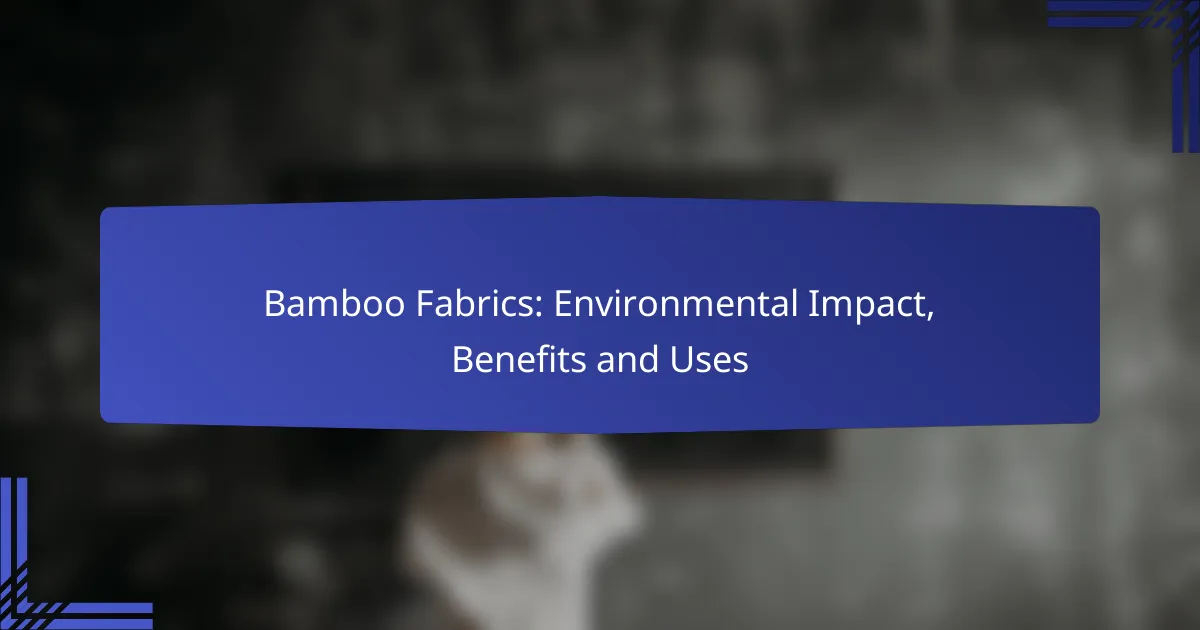Bamboo fabrics are emerging as a sustainable textile option, offering numerous environmental benefits such as biodegradability and reduced water usage compared to traditional crops. Their versatility makes them suitable for a variety of applications, including clothing and home textiles, appealing to eco-conscious consumers seeking alternatives to conventional fabrics.
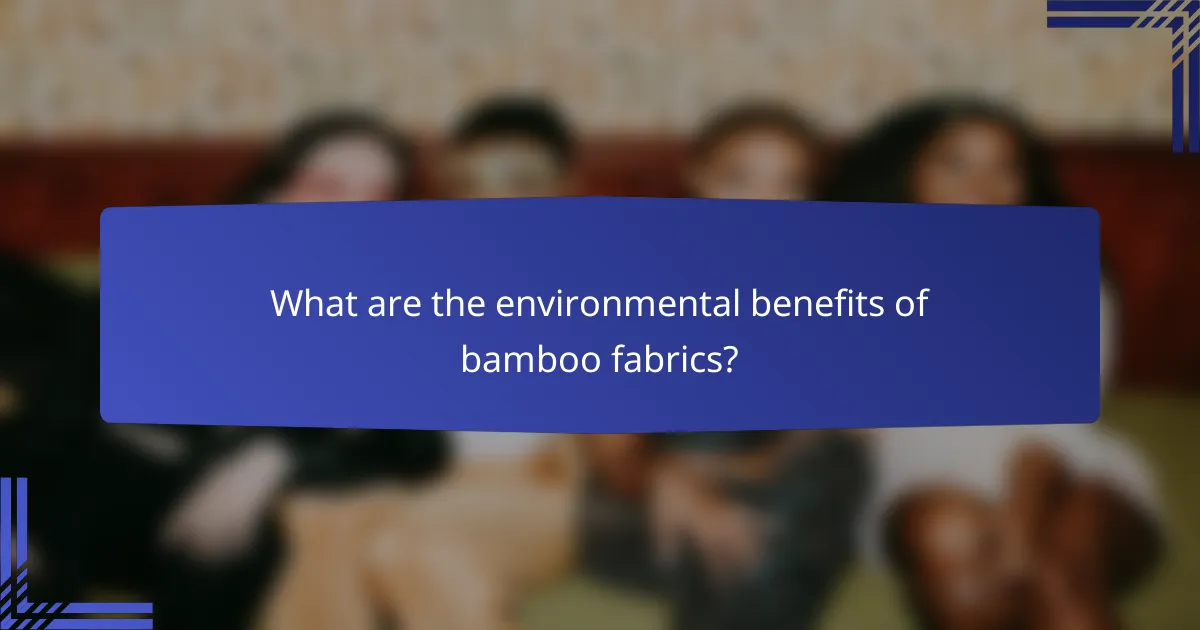
What are the environmental benefits of bamboo fabrics?
Bamboo fabrics offer several environmental benefits, making them a sustainable choice for textiles. They are biodegradable, require less water than conventional crops, and contribute positively to carbon sequestration and soil health.
Biodegradable properties
Bamboo fabrics are fully biodegradable, breaking down naturally without leaving harmful residues. This characteristic significantly reduces landfill waste compared to synthetic fibers, which can take hundreds of years to decompose.
When bamboo textiles are discarded, they return to the earth, enriching the soil rather than polluting it. This natural decomposition process supports a circular economy in textile production.
Low water consumption
Bamboo cultivation requires considerably less water than traditional cotton farming, often needing only a fraction of the water. This makes bamboo a more sustainable option, especially in regions facing water scarcity.
On average, bamboo can grow with minimal irrigation, relying primarily on rainfall. This efficiency not only conserves water resources but also reduces the environmental impact associated with water-intensive farming practices.
Carbon sequestration
Bamboo is known for its rapid growth and ability to sequester carbon dioxide from the atmosphere. It can absorb more carbon per hectare than many other tree species, making it an effective tool in combating climate change.
By planting bamboo, communities can enhance their carbon offset strategies, contributing to global efforts in reducing greenhouse gas emissions. This makes bamboo not just a fabric choice but a proactive environmental solution.
Soil health improvement
The deep root system of bamboo helps prevent soil erosion and enhances soil structure. This leads to improved water retention and nutrient availability, benefiting surrounding ecosystems.
Furthermore, bamboo’s growth can promote biodiversity by providing habitats for various species. Its cultivation can rejuvenate degraded lands, making it a valuable crop for sustainable agriculture practices.
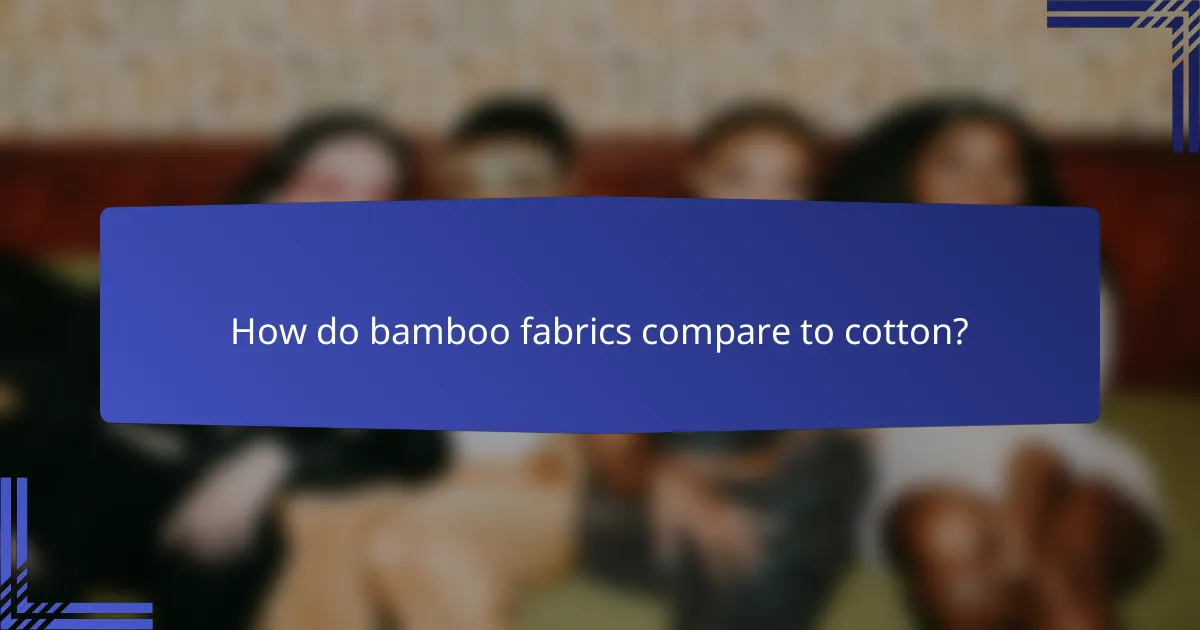
How do bamboo fabrics compare to cotton?
Bamboo fabrics generally have a lower environmental impact compared to cotton, particularly in terms of water usage and pesticide requirements. While both materials have their advantages, bamboo offers a more sustainable option for eco-conscious consumers.
Water usage comparison
Bamboo cultivation requires significantly less water than cotton. On average, cotton needs around 7,000 to 29,000 liters of water per kilogram, while bamboo can thrive on rainfall alone, needing minimal irrigation. This makes bamboo a more water-efficient choice for fabric production.
In regions where water scarcity is a concern, opting for bamboo over cotton can help conserve vital water resources. This is particularly relevant in areas like parts of Africa and Australia, where cotton farming can exacerbate water shortages.
Pesticide requirements
Bamboo is naturally resistant to pests, which means it typically requires fewer pesticides compared to cotton. Conventional cotton farming often relies heavily on chemical pesticides, contributing to environmental degradation and health risks for farmers. In contrast, bamboo’s resilience allows for organic farming practices that minimize chemical use.
Choosing bamboo fabrics can support sustainable agriculture and reduce the chemical load on ecosystems, making it a safer option for both the environment and human health.
Durability differences
Bamboo fabrics are known for their strength and durability, often outlasting cotton in terms of wear and tear. Bamboo fibers have a natural tensile strength that can withstand more stress, making them less prone to fraying and fading over time.
However, cotton fabrics can be treated for added durability, and their performance may vary based on the specific type of cotton used. For everyday use, bamboo fabrics can be an excellent choice for items like clothing and bed linens, offering longevity with proper care.
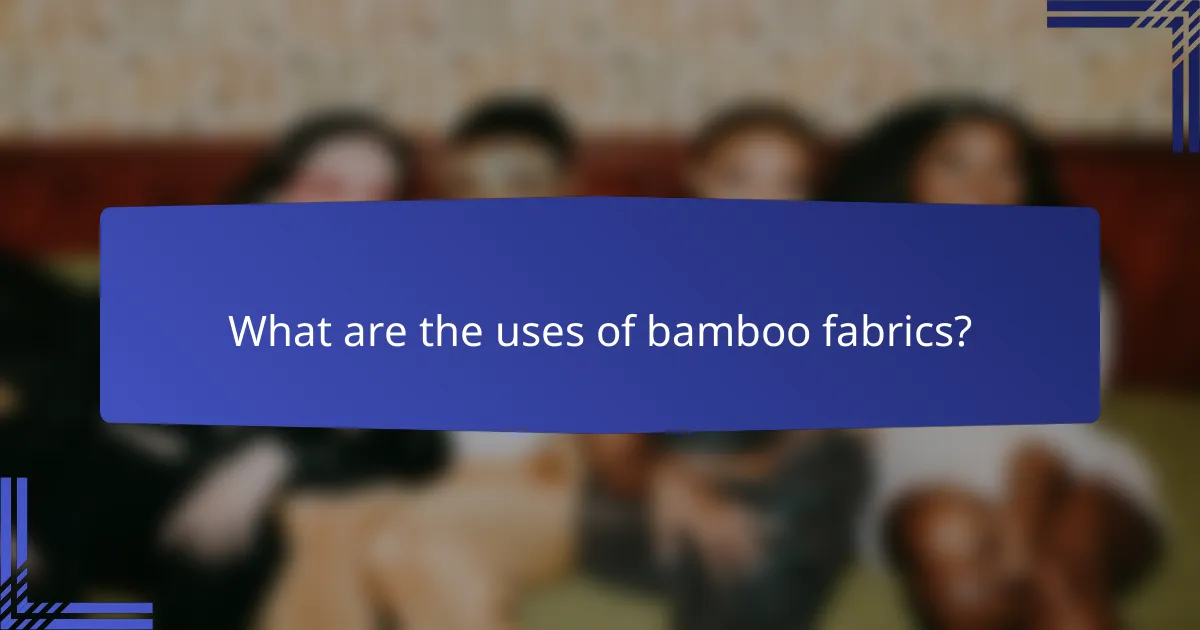
What are the uses of bamboo fabrics?
Bamboo fabrics are versatile materials used in various applications due to their natural properties. They are popular in clothing, home textiles, and eco-friendly packaging, offering sustainable alternatives to conventional fabrics.
Clothing applications
Bamboo fabrics are increasingly used in clothing due to their softness, breathability, and moisture-wicking properties. They are commonly found in activewear, undergarments, and casual apparel, providing comfort and functionality.
When selecting bamboo clothing, look for items labeled as 100% bamboo or a high percentage of bamboo fiber blended with other materials. This ensures you get the benefits of bamboo while maintaining durability.
Home textiles
In home textiles, bamboo fabrics are used for bed linens, towels, and curtains, offering a luxurious feel and natural antibacterial properties. These textiles are often hypoallergenic, making them suitable for sensitive skin.
Consider bamboo sheets and towels for their moisture-wicking ability, which helps keep you dry and comfortable. They are also easy to care for, often machine washable and quick to dry.
Eco-friendly packaging
Bamboo fabrics are gaining traction in eco-friendly packaging solutions, providing a sustainable alternative to plastic. They can be used for reusable bags, wraps, and even packaging for food items.
When choosing bamboo packaging, look for products that emphasize biodegradability and sustainability. This helps reduce environmental impact while promoting a greener lifestyle.
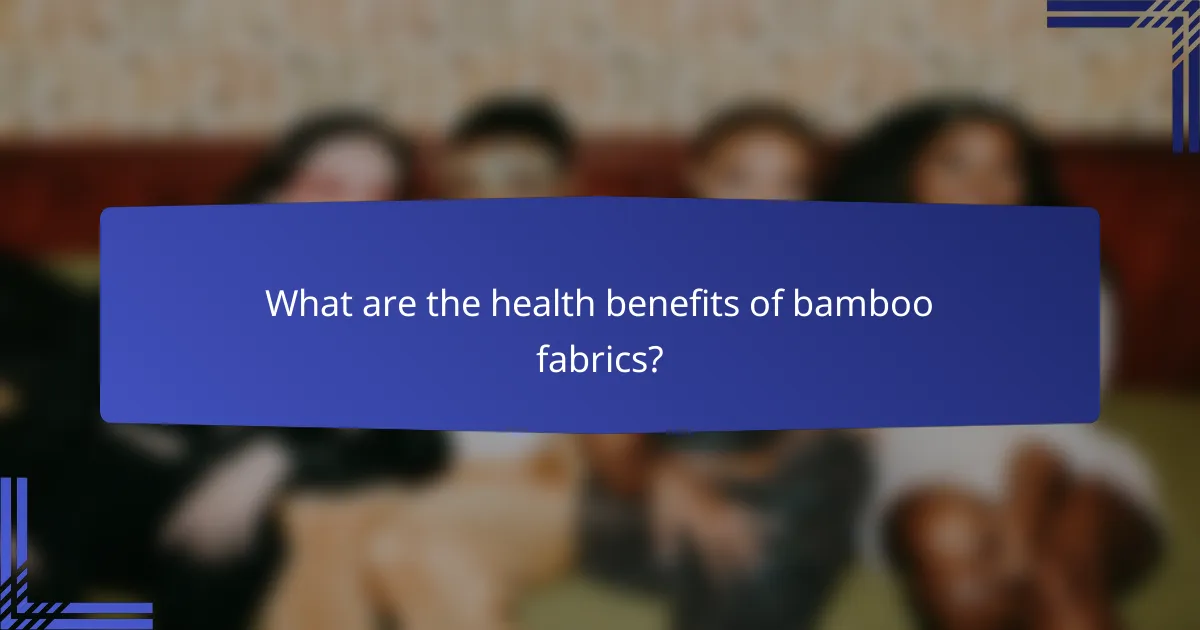
What are the health benefits of bamboo fabrics?
Bamboo fabrics offer several health benefits, making them a popular choice for clothing and home textiles. Their natural properties contribute to comfort, skin health, and overall well-being.
Hypoallergenic properties
Bamboo fabrics are naturally hypoallergenic, which means they are less likely to cause allergic reactions compared to synthetic materials. This characteristic makes them suitable for individuals with sensitive skin or allergies.
The fibers in bamboo are smooth and round, minimizing skin irritation. Choosing bamboo textiles can provide a more comfortable experience for those prone to rashes or other skin issues.
Moisture-wicking capabilities
Bamboo fabrics excel in moisture-wicking, effectively drawing sweat away from the skin. This feature helps keep the body dry and comfortable, especially during physical activities or warm weather.
The moisture-wicking ability of bamboo can be particularly beneficial for athletes or individuals who sweat easily. By maintaining a dry environment, bamboo fabrics can reduce the risk of skin irritations and promote better hygiene.
Antimicrobial features
Bamboo fabrics possess natural antimicrobial properties, which help inhibit the growth of bacteria and fungi. This quality is essential for maintaining freshness and preventing odors in clothing and bedding.
The antimicrobial nature of bamboo can be advantageous for those who wear activewear or sleep in bamboo sheets, as it contributes to a cleaner and healthier environment. Regular washing is still recommended to maintain these benefits over time.

What should I consider when buying bamboo fabrics?
When buying bamboo fabrics, consider the source, manufacturing process, and certifications. These factors influence the environmental impact, quality, and sustainability of the fabric.
Certification standards
Certification standards for bamboo fabrics ensure that the materials are produced sustainably and ethically. Look for certifications such as OEKO-TEX, which verifies that textiles are free from harmful substances, and FSC (Forest Stewardship Council), which indicates responsible forest management.
Additionally, certifications like GOTS (Global Organic Textile Standard) can help you identify organic bamboo fabrics that meet strict environmental and social criteria. These standards not only guarantee quality but also promote eco-friendly practices in the textile industry.
When purchasing, check the labels for these certifications to ensure you are making an informed choice that aligns with your values regarding sustainability and ethical sourcing.
